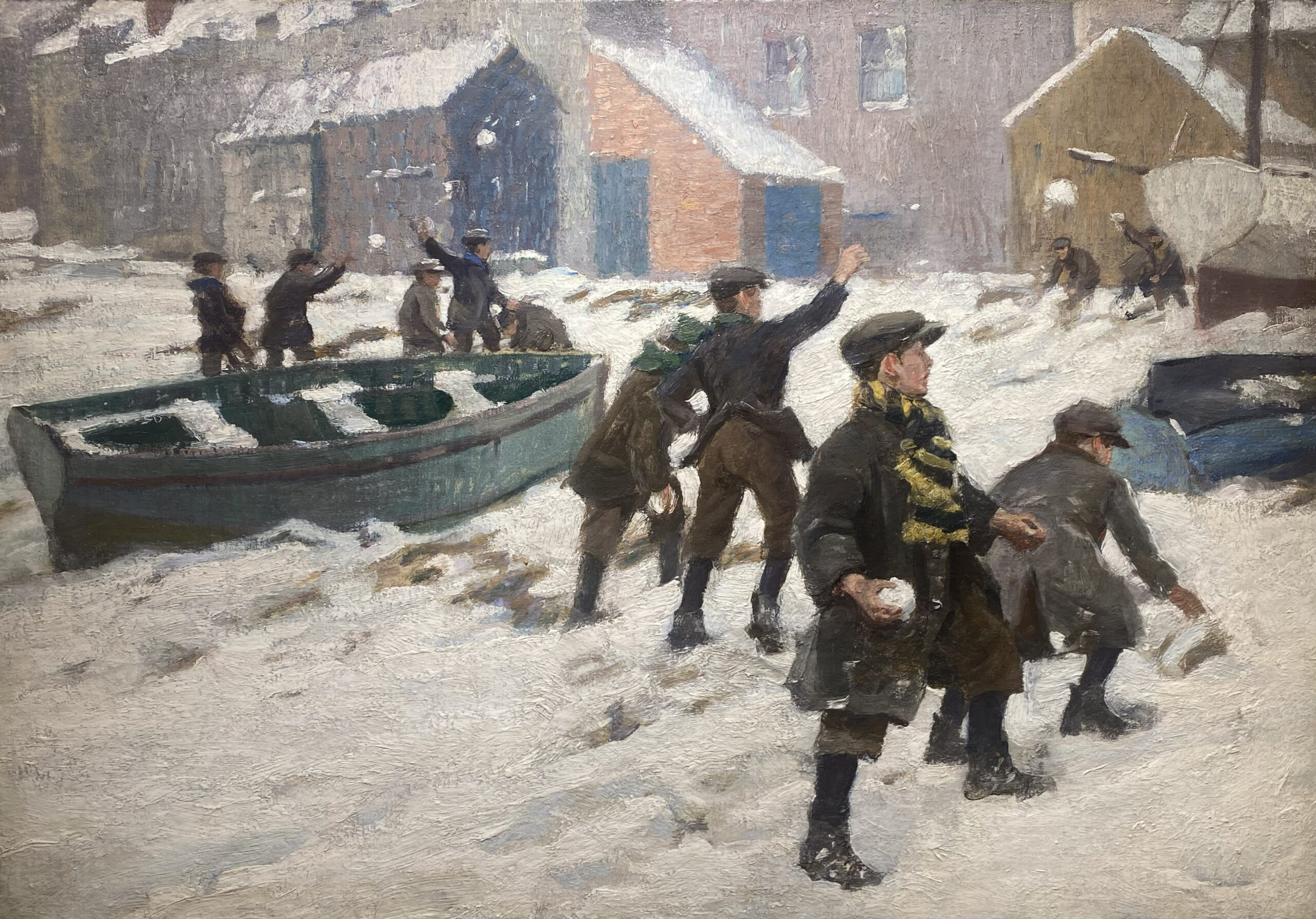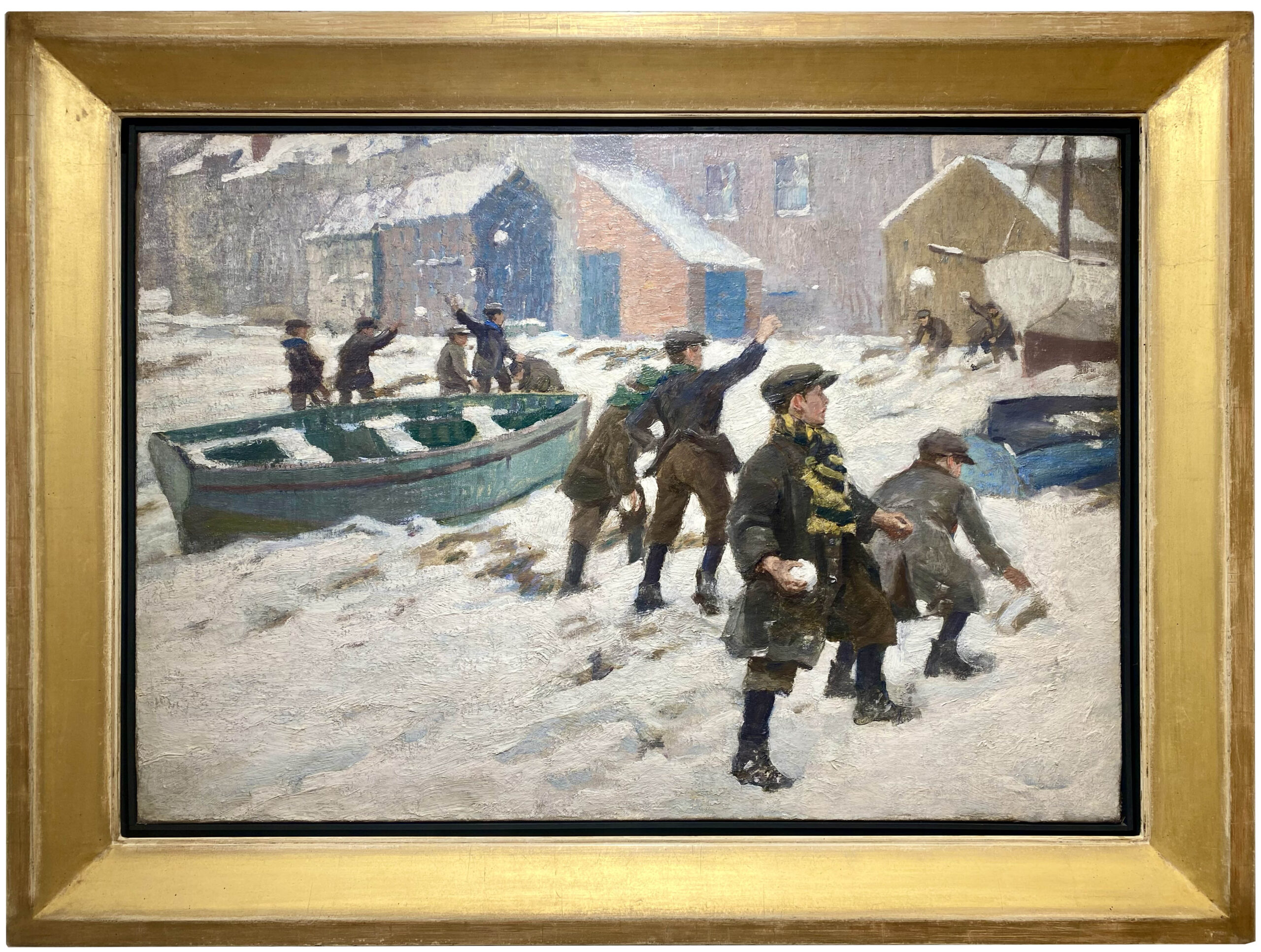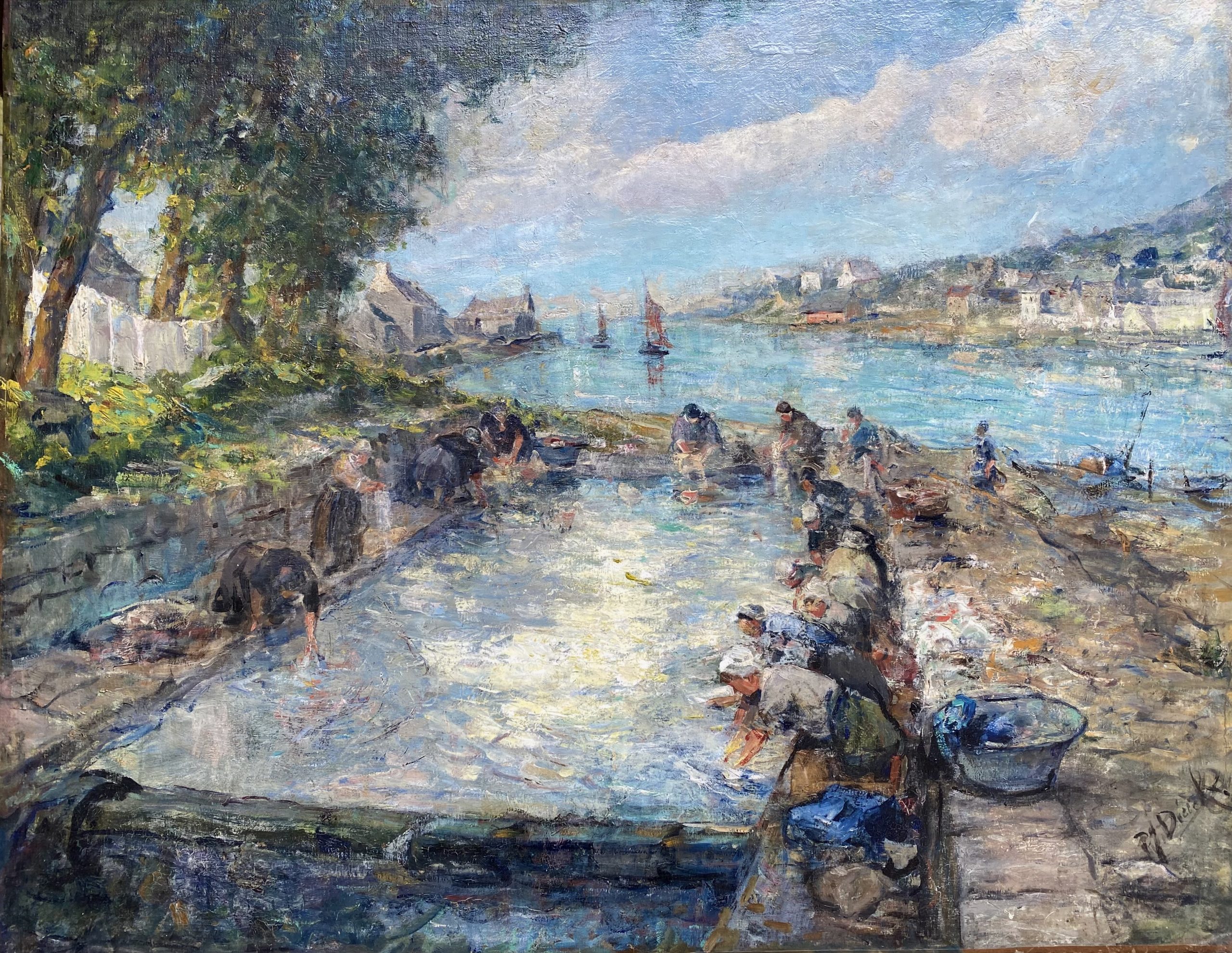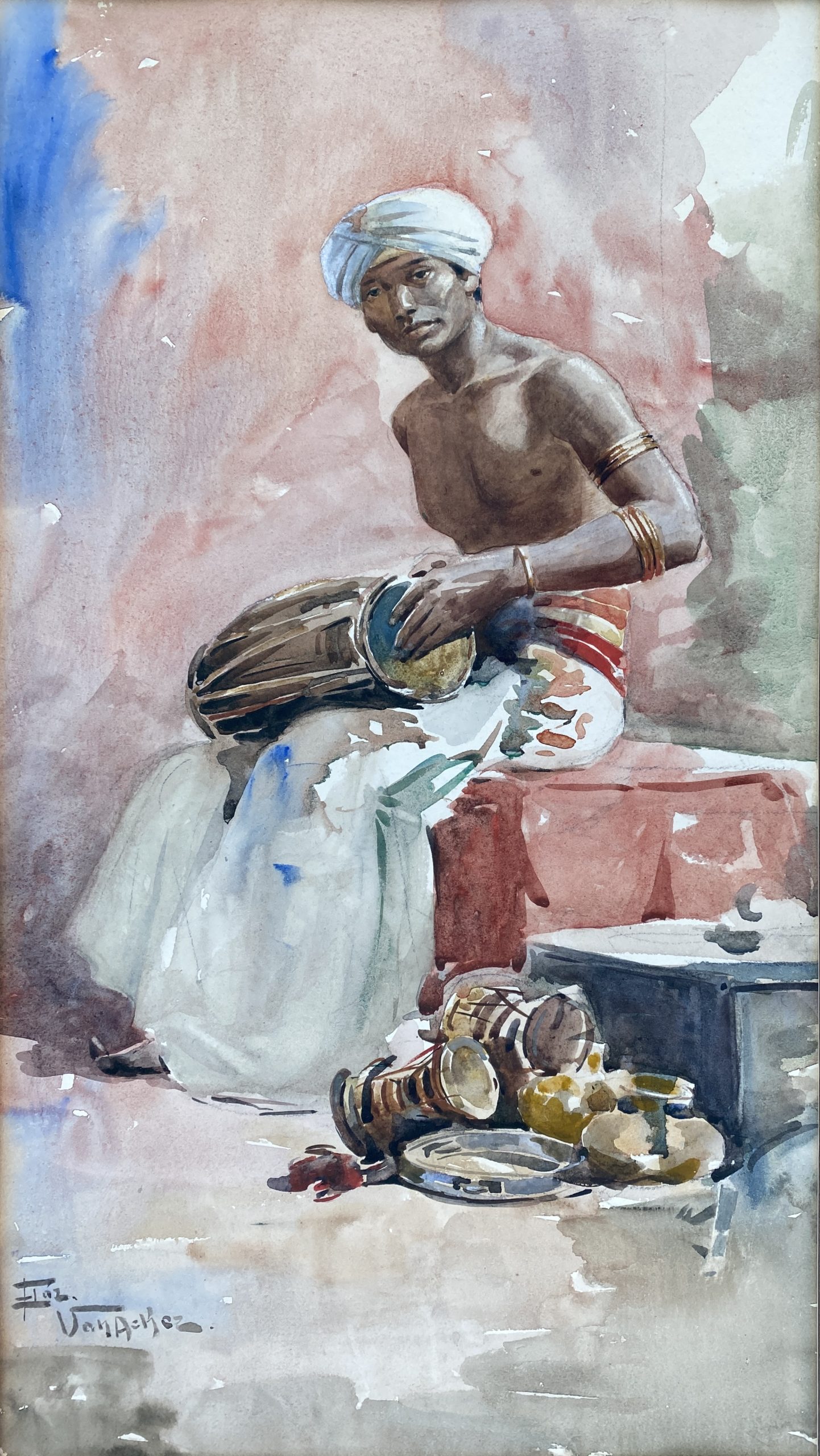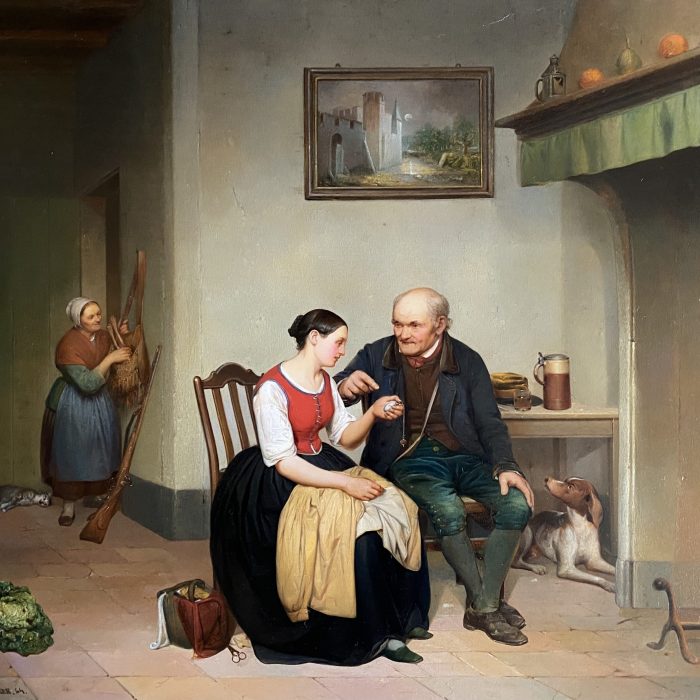19th–20th Century
Where Snow Meets the Sea
Where Snow Meets the Sea presents a vivid winter scene in a quiet harbor town, where a group of boys engages in a spirited snowball fight along the snow-covered shoreline. Boats rest along the coast, nestled in the crisp white snow, while the children bring life and movement to the otherwise still landscape. The composition is rich in atmosphere and energy, executed in earthy and cool tones, with confident, expressive brushwork.
At once animated and introspective, the painting captures the delicate meeting of snow and sea—an evocation of both playful vitality and serene winter stillness. Though unsigned, and with an unfinished composition visible on the reverse, the work reveals the sensibility of a skilled painter active in the late 19th or early 20th century—an artist attuned to the poetry of light, gesture, and the fleeting rhythms of everyday life by the sea.
We can se clear similarities with the painting’La plus grande boule de neige – The Giantest Snowball, 1903′ by Jean Mayne.
JEAN MAYNE
Watermael-Boitsfort 1854 – 1924 Ixelles
Belgian Painter
Jean Mayné was born in Watermael-Boitsfort on October 12, 1854, into a family of artists. His father, Philippe Mayné, was a draftsman and garden furniture maker, and his mother, Marie Catherine Debecker, was a painter and watercolorist. In 1885, he married Joséphine Pilloy in Ixelles, and the couple had three children: Raymond, an engineer; Berthe, a painter; and Jules, a draftsman.
He began drawing in his father’s workshop before attending the private studio of Jean-François Portaels. From 1873 to 1879, he studied at the Royal Academy of Fine Arts of Brussels, training in drawing from antique models and from life. In the academic year 1878–1879, he ranked twelfth, ahead of James Ensor.
In 1880, Mayné became a professor of drawing and modeling at the Municipal School of Drawing and Modeling in Ixelles, later renamed the School of Industrial and Decorative Arts of Ixelles. He was active in several artistic circles, including La Chrysalide, Les Hydrophiles, and L’Essor, and he participated in numerous exhibitions, both in Belgium and abroad. His talent was recognized with a bronze medal at the 1889 Exposition Universelle in Paris, and he illustrated the second album of the Belgian Society of Etchers with his etching Old Woman in Prayer. He also contributed to the Panorama of Cairo and represented Belgium at the 1895 Exposition of Bordeaux.
Jean Mayné’s work encompasses portraits, genre scenes, and orientalist compositions. While his oil paintings are meticulous, his pastels and black chalk drawings are notable for their expressive quality, precise lines, and strong chiaroscuro. Widowed in 1919, he died in Ixelles on December 2, 1924, at the age of 70.

